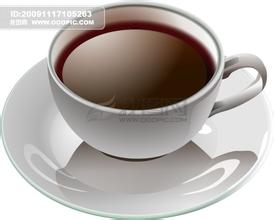Jasmine fragrant Coffee beans Ethiopian Coffee Flavor description introduction to the taste characteristics of the manor area
Introduction to Flavor Description of Yerga Shefi Fine Coffee Bean
Tasting the specialty food and enjoying their coffee culture, the waiter sat beside the brazier and roasted a flat earthenware container containing brown coffee beans on the fire, turning it from time to time to make it even. Then pour them into a large wooden bowl called a mukcha and pound them with a pestle like garlic. The next step is to cook coffee. The waiter quickly poured the ground coffee into the earthenware pot and set it over the fire to boil. The owner said that this kind of pottery pot is specially used for brewing coffee. Its main feature is that it can maintain the natural aroma of coffee beans, far better than the copper pot or aluminum pot used in the city. Sure enough, accompanied by the squeaking sound of the kettle water, a strong aroma unique to coffee also leaked out from the spout along with the milky white steam.
As the waiter lifted the pots from the fire, another waiter took advantage of the situation by lighting a handful of incense sticks and sticking them into the doorpost. This is also a traditional custom in Ethiopia. It has two meanings: one is that incense can disperse mosquitoes and flies, bringing good luck; the other is that it means that the hostess has brewed coffee and welcomes neighbors to taste it.
Coffee farming villages produce about 35 percent of the country's coffee. These coffee farms, which use a multi-tiered coffee growing system, are carefully cared for. Coffee farmers do not use chemical fertilizers, but use fallen leaves, plant and animal debris to increase soil nutrients. In addition to coffee, farmers also frequently grow non-coffee crops. Even manor coffee (coffee produced on state farms), which accounts for 5% of the country's coffee production, exhibits forest-type coffee production characteristics.
Located in the most privileged natural conditions, Ethiopia produces unique high-quality coffee every year. Ethiopia's coffee growing cycle brings harvest joy to the country every year. Beautiful white coffee flowers bloom and bear fruit every year between March and April. Only the reddest and most mature fruits are selected for coffee between September and about December. New coffee exports begin in November or December each year.
Ethiopia's geographical environment is very suitable for coffee growth. Coffee is mainly grown in the southern highlands between 1100 and 2300 meters above sea level. The main coffee producing areas are Harar, Limu, Djimma, Sidamo, Kaffa, Yergacheffe and Wellega. The soil in these areas is well drained, slightly acidic, and red and loose.
Ethiopian coffee is harvested once a year. 3-4 Beautiful white coffee blossoms bloom during the month, and then the fruit begins to grow. 9-12 The moon-red coffee fruit ripens and waits to be picked. 11-12 The new season of coffee begins to export

Important Notice :
前街咖啡 FrontStreet Coffee has moved to new addredd:
FrontStreet Coffee Address: 315,Donghua East Road,GuangZhou
Tel:020 38364473
- Prev

Jasmine Manor Guatemala Coffee Flavor Taste Variety Characteristics Manor Area Description Growing Environment
Guatemala is a coffee producing area that cannot be ignored and is a typical representative of coffee flavor diversity. Guatemala SHB(Hardest Bean) is almost synonymous with high-quality coffee known to all. Guatemala Jasmine PlantationOrigin: Antigua Altitude: 1550-1800 m Processing method: Washing grade: European standard SHB Roasting degree: CITY+ Flavor characteristics: lime, malt caramel
- Next

Introduction of taste grinding degree of Brazilian coffee bean planting base map brand flavor description treatment method
Brazilian boutique coffee beans introduce Brazil as the world's largest coffee producer. But Brazil originally did not produce coffee. Coffee originated in Arabia and was introduced into Europe in the 18th century and was very popular. Later, the French specially shipped the coffee saplings to French Guiana, which was finally introduced into Brazil, and finally carried forward in Brazil. Don't forget the famous coffee in Brazil. Buy a few bottles and send them home.
Related
- Detailed explanation of Jadeite planting Land in Panamanian Jadeite Manor introduction to the grading system of Jadeite competitive bidding, Red bid, Green bid and Rose Summer
- Story of Coffee planting in Brenka region of Costa Rica Stonehenge Manor anaerobic heavy honey treatment of flavor mouth
- What's on the barrel of Blue Mountain Coffee beans?
- Can American coffee also pull flowers? How to use hot American style to pull out a good-looking pattern?
- Can you make a cold extract with coffee beans? What is the right proportion for cold-extracted coffee formula?
- Indonesian PWN Gold Mandrine Coffee Origin Features Flavor How to Chong? Mandolin coffee is American.
- A brief introduction to the flavor characteristics of Brazilian yellow bourbon coffee beans
- What is the effect of different water quality on the flavor of cold-extracted coffee? What kind of water is best for brewing coffee?
- Why do you think of Rose Summer whenever you mention Panamanian coffee?
- Introduction to the characteristics of authentic blue mountain coffee bean producing areas? What is the CIB Coffee Authority in Jamaica?

